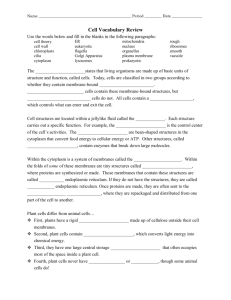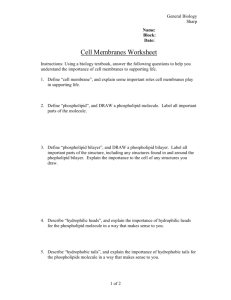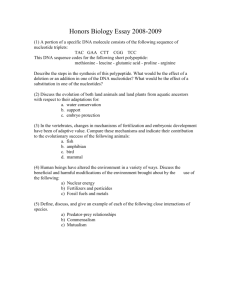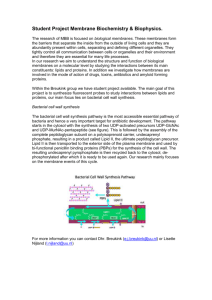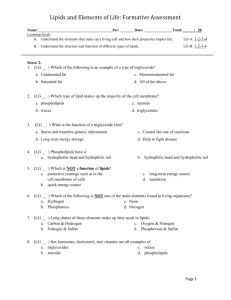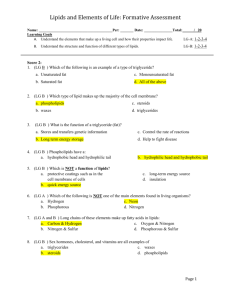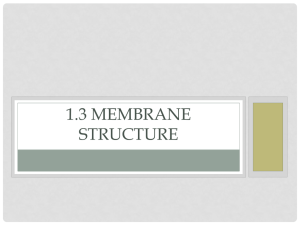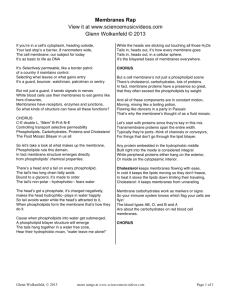Word
advertisement
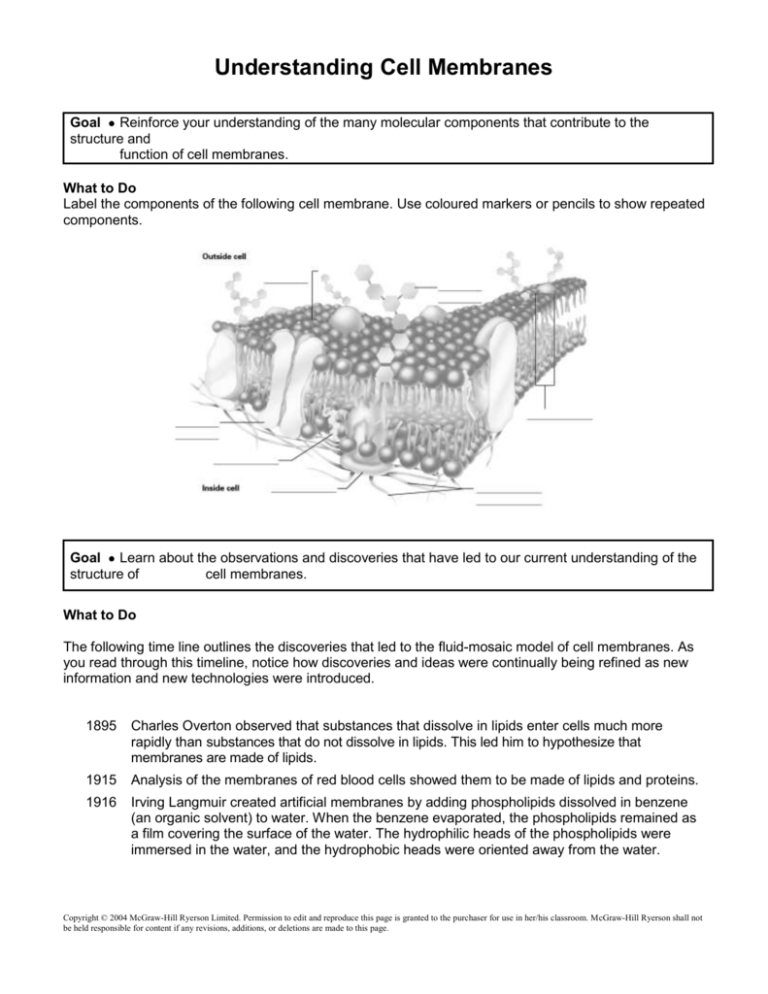
Understanding Cell Membranes Goal Reinforce your understanding of the many molecular components that contribute to the structure and function of cell membranes. What to Do Label the components of the following cell membrane. Use coloured markers or pencils to show repeated components. Goal Learn about the observations and discoveries that have led to our current understanding of the structure of cell membranes. What to Do The following time line outlines the discoveries that led to the fluid-mosaic model of cell membranes. As you read through this timeline, notice how discoveries and ideas were continually being refined as new information and new technologies were introduced. 1895 Charles Overton observed that substances that dissolve in lipids enter cells much more rapidly than substances that do not dissolve in lipids. This led him to hypothesize that membranes are made of lipids. 1915 Analysis of the membranes of red blood cells showed them to be made of lipids and proteins. 1916 Irving Langmuir created artificial membranes by adding phospholipids dissolved in benzene (an organic solvent) to water. When the benzene evaporated, the phospholipids remained as a film covering the surface of the water. The hydrophilic heads of the phospholipids were immersed in the water, and the hydrophobic heads were oriented away from the water. Copyright © 2004 McGraw-Hill Ryerson Limited. Permission to edit and reproduce this page is granted to the purchaser for use in her/his classroom. McGraw-Hill Ryerson shall not be held responsible for content if any revisions, additions, or deletions are made to this page. 1925 Two Dutch scientists, E. Gorter and F. Grendel, hypothesized that membranes must be phosopholipid bilayers, two molecules thick. They measured the phospholipid content of the membranes of red blood cells and found only enough lipids to cover the cells with two layers. This confirmed their reasoning. 1935 Hugh Davson and James Danielli proposed that a phospholipid bilayer was sandwiched between two layers of proteins. (See the diagram below.) Electron microscopes were first used to study the model proposed by Davson and Danielli. The images showed a triple-layer membrane: two dark stained bands, separated by an unstained layer. Scientists assumed that the proteins and hydrophilic heads of the phospholipids made up the stained layer and the hydrophobic core was the unstained layer. Early 1960s Davson and Danielli’s model was accepted by most scientists. Late 1960s Davson and Danielli’s model was challenged, primarily because scientists did not know that a protein has a hydrophilic end and a hydrophobic end. This fact would not support the idea of proteins completely “sandwiching in” the phosopholipid layer. 1972 After 1972 Scientists S.J. Singer and G. Nicholson revised Davon and Danielli’s model by suggesting that membrane proteins are interspersed through the membrane, with their hydrophilic and hydrophobic ends placed accordingly (that is, with their hydrophilic ends exposed to water). This became the widely-accepted fluid-mosaic model of membranes. (See the diagram below.) Freeze-fracture technology proved that proteins Copyright © 2004 McGraw-Hill Ryerson Limited. Permission to edit and reproduce this page is granted to the purchaser for use in her/his classroom. McGraw-Hill Ryerson shall not be held responsible for content if any revisions, additions, or deletions are made to this page.
